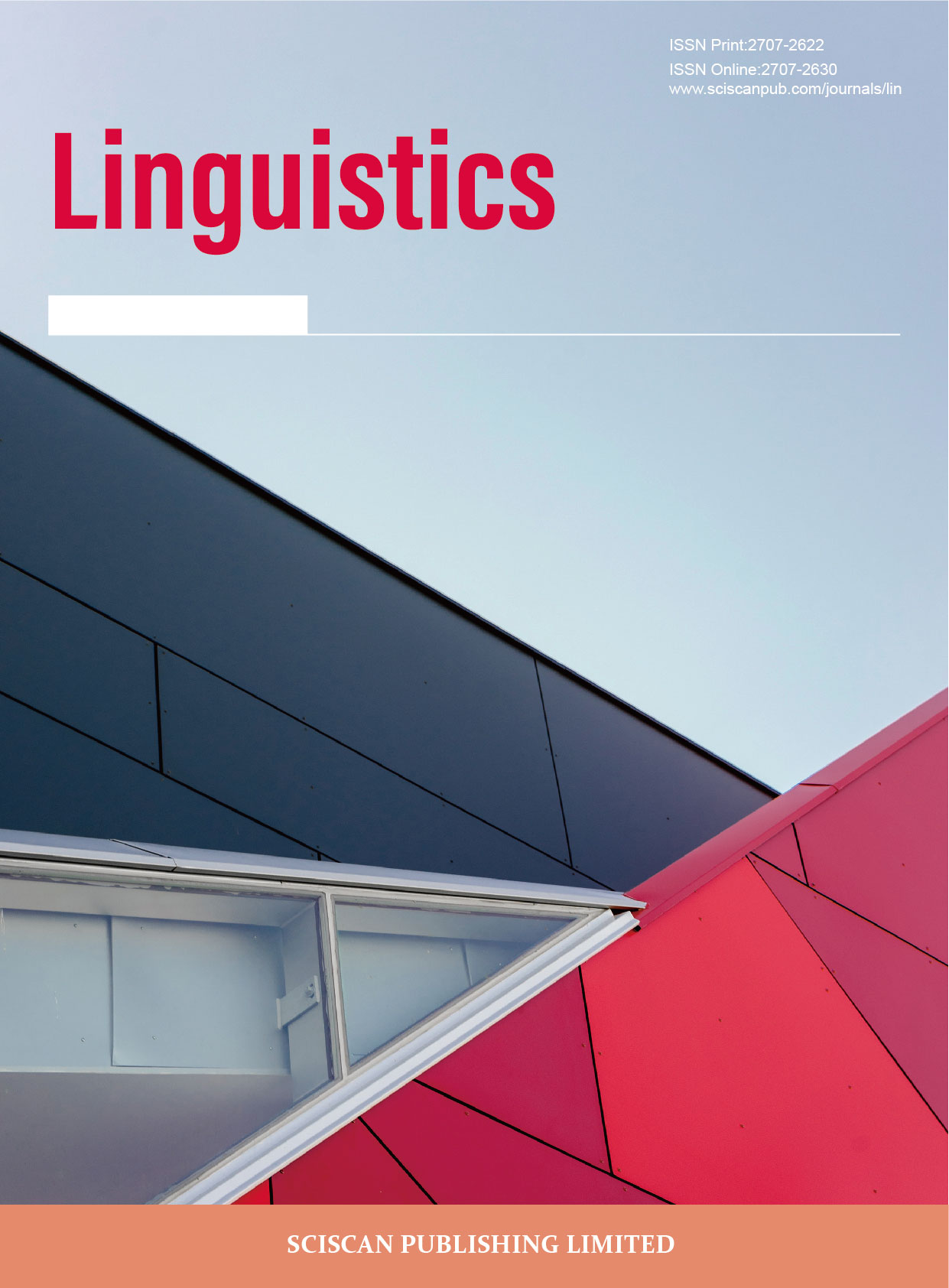“山水之城,美丽之地”和“重庆·行千里,致广大” 的翻译
An Analysis of Translation of “ 山水之城,美丽之 地” and “ 重庆· 行千里,致广大”
- Authors: 陈云生
-
Information:
重庆邮电大学外国语学院,重庆
-
Keywords:
Character-splitting translation; Relevance; Convergence; The beauty in sound, form, and meaning拆字翻译; 关联; 趋同; 三美
- Abstract: Character-splitting translation is a kind of form translation at word level, which takes the character as the central point and the sentence or text as the reference, so it is restricted and regulated by the sentence or text. Taking “山水之城,美丽之地” and “重庆•行千里,致广大” as examples, this article analyzes the original translation of the two slogans and proposes a new translation from the two principles of a reductionist approach to translatology, i.e., relevance and convergence. It is claimed that in addition to the fidelity of meaning, character-splitting translation should also consider the relevance of content and form of convergence between ST and TT, mainly reflected in words, rhymes, word order, sentence structure, etc.. What’s more, some factors should also be taken into account, including the antithesis between sentences in neat formation, the rhythm of the unification between words, sentence rhythm harmony and the same number of words in two sections and so on. Furthermore, it’s also crucial to consider the beauty in sound, form, and meaning of the TT to optimize the translation. 拆字翻译属于字词层面的形译,以字为着眼点,以句或篇为参照,因此所拆字受句、篇的制约和调节。以重庆宣传语“山水之城,美丽之地”和“重庆·行千里,致广大”为例,从翻译学归结论的两大原则——“关联”原则和“趋同”原则,对该宣传语的原译文进行分析,提出新的译文。文章认为,拆字翻译除保证意义忠实外,必定要考虑内容的关联性和形式的趋同性,主要体现在用词、用韵、词序、句型结构等方面。此外,翻译时还要注意句间的对仗严整、词间的节奏统一、整个句子的韵律和谐以及上下句的音节数相同或相近等等。同时,译文尽量兼顾“三美”,保证译文质量达到最佳。
- DOI: https://doi.org/10.35534/lin.0303029
-
Cite:
陈云生.“山水之城,美丽之地”和“重庆·行千里,致广大”的翻译[J].语言学,2021,3(3):488-498.
1 引言
在重庆,不管是乘坐轨道交通或公交车,还是去景点观光或商圈购物,都可能见到“山水之城,美丽之地”这两幅宣传标语。“山水之城,美丽之地”是习近平总书记于2019年4月在重庆考察调研时提出的,要求重庆加快建设成为内陆开放高地和山清水秀的美丽之地。“重庆·行千里,致广大”是2018年3月十三届全国人大一次会议重庆代表团全体会议上,重庆市委书记陈敏尔为重庆旅游做的广告。他认为不只是旅游,在实现高质量发展、推进供给侧结构性改革等其他很多方面,都需要这种精神。该宣传语吸取了拆字的技巧,对“重”和“庆”字做了相同的拓展处理,即千里为重、广大为庆。
目前,这两幅宣传标语都有官方公布的译文,但遗憾的是其译文均存在不足,尤其是没有体现出原文的拆字特点。拆字翻译鲜有学者关注,偶尔出现在翻译研究中也多作为不可译的例子。诚然,拆字翻译绝非易事,但正是这样有挑战的事,引起了笔者的兴趣。本文首先分析宣传语现有译文的不足之处,再运用翻译学归结论的“关联”和“趋同”两大原则提出在意义和形式上均符合原宣传语的译文,并证明拆字的可译性,以期充实形译尤其是拆字翻译的理论和实践。
2 现有译文及其不足
“山水之城,美丽之地”和“重庆·行千里,致广大”现有译文如图1所示:

图1 宣传语现有译文
Figure 1 The existing translation of the two slogans
其中,“山水之城,美丽之地”的译文只有一种,即:
(1)A Land of Natural Beauty
A City with Cultural Appeal
从形式上来讲,译文中心词均为名词,即land和city,名词后分别用一个介词of和with接一个名词词组natural beauty和cultural appeal,两句译文成分对应相同,译文长度相当。从音韵上来讲,上下两行音节数相近,译文读起来也比较朗朗上口。但是,笔者认为这样逐字对译显得过于直白、笼统而没有内涵,不能充分和饱满地体现出宣传语想要传达给受众的完整信息,同时也有一些错误,缺乏美感。首先,把“城”译为land,把“地”译为city,两个词正好搞反了,其象征意义自然也就发生了改变,和中文要表达的意思就有了一定出入。其次,用natural修饰land,让人感觉重庆只是一块景色优美却无人居住的原始之地。更重要的是,“美丽”跟文化在本质上是没有必然关系的,所以译文里出现cultural其实是缺乏根据的。可见,译文对原文意义和内容的再现处理上欠妥。“重庆·行千里 致广大”有两个英译版本,如下:
(2)A Tour in Chongqing,A Gain in Vision
(3)Chongqing:Journey to New Accomplishments
译文(2)外延偏窄,中心词是tour,就仅限于重庆旅游方面的信息,囊括的内容只是重庆更好更快发展的一部分。而且,信息传达较模糊,gain这个词笼统,而vision更多也是偏向旅游视野和眼界方面,作为宣传口号显得不够大气,不够有吸引力,也没有体现出与其他城市旅游宣传的差异。译文(3)没有动词,读起来比较简洁,但作为宣传口号似乎少了些气势,同时也显得笼统,让人觉得这只是关于重庆经济发展的口号,这就偏离了推介重庆旅游产品和资源的初衷,在意义和内涵的传递上没有做到对等。要特别说明的是,原宣传语除了内涵丰富以外,最大的特点是有拆字。将“重”字拆为“千”和“里”,“庆”字拆为“广”和“大”,这个形式上的特色一定要在英语的译文里体现出来,用最简洁、达意、对等的英语表达出来,才能算得上是忠实,然而上面两个译文都没有做到这一点,可以说既不关联,也不趋同,正如Xie(2019)所言:“如果原语的形式在翻译中丢失,那么该翻译便不能称为翻译作品,自然也不会对译入语读者留下持久的影响。”如此,译入语读者便无法与原语读者产生相同的感受,也不会对原作留下深刻的印象。
3 我们的译文
拆字是极具民族语言特殊性的语言,将汉字加减笔画,拆开偏旁,或打乱字体结构,是汉字所具有的独特的构词手法。钱歌川(1980:73-76)在谈到语言的不可译性时说,“拆字为汉文特有的玩意,绝不可以翻译。”但果真如此吗?左飙(1998:190)认为,文化的不可译性不是无条件的,在一定条件下,不可译可以转化为可译。
合体字经拆分成两个字后,又各具新的字义,其字形和字义的变化,是很难完整准确地用英语表达出来的,其翻译具有很大的挑战性(黄碧蓉,2005)。赵彦春(2005:227)、吕丽荣(2007;2016)认为,拆字翻译属于字词层面的形译,被认为是翻译中的特例,而形译大多采用意义类比法。类比是指语义不一样,但语用意图相似,即以不同类但相似的方法来解决矛盾,用于翻译就是使译文在整体上相似于原文,与原作等值。而类比法就是在话语和语境假设之间寻求的最佳关联,因此也必然是向“对等”趋同的。王强(2019)认为,类比不是盲目的比附,译文离开原文后也应该是自足的。因此,笔者认为,汉字拆字包含了巧妙的文化元素,但由于语言的异质性和英汉语之间的差异,汉字拆字特点可能会遇到无法直接表达的情况,此时“要求同质语言观与异质语言观的辩证统一”(刘宓庆,2001:129),向原文“趋同”将成为有效策略,采用类比不失为翻译上策。
同时,宣传语的特点也是翻译过程中需要考虑的因素。肖雪锋(2013)认为,城市宣传语特点主要可概括为三个方面:一是简洁明了,二是既要大众化又要具有地方特色,三是富有韵律感,具有较高的感召力。因此,译文也要尽量保持原有特点,尽量做到简洁、有特色、有韵律感。重庆这两个宣传语巧取拆字优点,以形喻意,既保持了重庆的特色“山”和“水”,又简洁,有节奏感。正如任增强(2015)所言,“将单个汉字加以拆解,厘析各组字偏旁的意象特质,进而赋予其以诗性言说。”
笔者注意到这两个宣传语基本都是同时出现在一张宣传海报或银屏上,既然如此为何不考虑将两个口号的译文合二为一后进行再创造呢?结合类比法和宣传语的特点,笔者认为,首先,翻译的译文要押韵,尽量做到和原文的类比关联。第二,节奏要抑扬顿挫,让读者读起来朗朗上口。第三,译文音节数尽量与原文字数关联,并尽量做到向原文不断趋同。在此基础上,如能兼顾更深的语言内涵,可谓上乘之作。正如Jiang(2019)所言,“翻译时应考虑原语的文化文学因素。”要做到将宣传语传达的内容进行归纳整理,同时又要体现出宣传语的理念和特点。因此,针对以上译文的不足和欠缺,同时又考虑到这两个标语一般情况下都是同时出现在公共场合,笔者和所在团队将这两个标语的内容进行整合后融为一体,把它们翻译如下:
(4)Chongqing,a double-blessed beauty:Ahead you stride to the space wide
在形式的排版上如果觉得作为标语显得偏长,也可以将整句话排列成两行,上下基本等宽,中间的冒号可以不要,如下:
(5)Chongqing,a double-blessed beauty
Ahead you stride to the space wide
以上译法的思路来源是来自赵彦春(2005:147)在《翻译学归结论》中对翻译提出的更确切的定义,即翻译是尽量使译文向原文趋同的动态行为,以及他在书中提出的“关联”和“趋同”两大原则。他提出“关联”原则是关于对源语语篇的解读和转换,使译语和源语在意义、内容、文化概念等方面对应相关,使译语以另一种语言表现出来后不失原味;趋同原则就是向原作趋同,向对等、常译和常道趋同,而这一切都寓于形式之中(赵彦春,2005:110;243)。这两大原则同样可以运用到拆字翻译上来。许渊冲(2006;2007:18)提出翻译不仅应忠于原文,还应做到意美、音美和形美,在译诗时,最好是“三美”齐全,如果不能兼顾,就要从全局考虑取舍。因此在此基础上还应该做一个整体衡量,即从音美、形美、意美三个方面综合考量译文。拆字翻译是形译的一种表现,而意义类比又是实现形译的基本手段,因此意义的关联和形式的趋同自然是拆字翻译的核心要点。
宣传口号要有节奏、押韵、顺口、好听,这就是它的音美。比如,2014年篮球世界杯上美国总统奥巴马喊出的口号“I believe we can win”,前两个词I believe轻读,后三个词we can win重读,十分有节奏感,在当时篮球场上营造了强烈的氛围,激发了美国国民团结奋进的爱国情感和精神。再来看随处可见的城市宣传口号,如“垃圾不落地,环境更美丽”,上下句押尾韵/i/韵,既好听又好记。因此,在英文中要传达它的音美,可以借用英美诗人喜闻乐见的格律,选择和原文相似的韵脚,还可借助双声、叠韵、重复等方法来再现其音美(许渊冲,2006)。
来看笔者给出的译文,从音美上看,stride和space押头韵,即/s/韵,同时stride又和wide押尾韵,即/aid/韵,在音韵上也做到了拆分,前后关联,头尾韵相互穿插交替,使整个句子读起来有一种音韵美,朗朗上口,既好听,又好记,对受众也十分友好。除此以外,Ahead you stride to the space wide轻重音交替分布,其中ahead/stride/space/wide带重读,you/to/the发轻音,整个句子读起来有抑扬顿挫之美,富有韵律感,和谐悦耳,还体现出一种号召力,尤其是stride这个词在词义上隐含着重庆的发展将阔步向前,十分有感染力。再者说stride一词与space押头韵,与wide押尾韵,韵律和谐,节奏明快,可谓是一箭双雕。不妨试试将stride一词换为develop或contribute,对比后就会发现,这两个词的意义比stride更加笼统,不具体,更重要的是考虑到语篇逻辑与前后关联,要以整个句子为语境、为参照,从这一点上来说develop或contribute与语篇的关联上也不能体现出拆字的特点。因此,可以说笔者的译文在文字的处理上已经超越了原文。
表1 原文与译文字数、音节数对比
Table 1 Comparison of the number of words and syllables between ST and TT
|
原文 |
译文 |
||
|
原宣传语 |
字数 |
译文 |
音节数 |
|
山水之城,美丽之地 |
8 |
2 1 2 1 2 Chongqing, a double-blessed beauty |
8 |
|
重庆·行千里,致广大 |
8 |
2 1 1 1 1 1 1 Ahead you stride to the space wide |
8 |
从音节上来看,两个标语的原文均为8个字,而笔者的译文根据原标语的字数和分布情况,类比原标语字数和分布,第一行译文有8个音节,第二行也采用8个音节,两行音节数完全相同,对仗严整,译文音节数与原标语字数达到了趋同的状态,同时上下行分布不论是从音节数还是句子长度上来看都十分和谐,体现出一种音节美和分布的对称美。
刘坤尊(2002)说“拆字是汉语文中的一种写作技巧”。但是,笔者认为,在英文中拆字并不能和写作画等号。谢汉江(2018)认为汉字是表意的语言。如何理解呢?这里可以作两种解释:第一种是“表象意义”,即根据文字字形就能看出其意思;第二种是“表达意义”,即文字在记录语言时反映或表达的是何种意义。所以,汉字的组成结构多样,且偏旁部首就有含义,拆字创造后又会具有独立的意思,正如“重庆”二字,拆成“千里”“广大”后又具有了不同的内涵。路新杰等(2010)说,英语是形合语言,是拼音文字。可以发现,与汉字相反,这些字母从形式上并不传达任何意义,且词的拼写与发音都按照一定的发音规则形成逻辑关系进行排列组合,组合而成的词语也只是一些拼音符号,从形式上不表意,如ahead、stride这些词无法拆分,且从形式上说不具任何特点,只按照英语组合规则成词。因此,在英语中,拆字很少见,也很难做到,更不要说将词的拆分视为写作了。由此可见,要在译文中体现和保留汉语中的拆字技巧,在形式上的再现是较难的,只能试着在形式的类比上做文章,除此以外,再现原词的节奏,还有赖于译文音节和韵律上的完美搭配。
从形美上看,“重庆·行千里,致广大”,这一口号拆字成对,以形寓意,兼具了汉语拆字和对仗的妙处,翻译难度较大,正如杨全红、陈鸿琴(2001)所言,翻译中最大的障碍莫过于原语的拆字。该宣传语有两层意思:其一,“千里”和“广大”均为词的构件,合在一起,构成“重庆”二字;其二,代表重庆发展前景宽阔且迅速(此处,“千里”和“广大”不是词的构件,而是有意义的词),而英语似乎不具备类似的特点。笔者的译文把Chongqing放在开头,首先就突出了全句的主题,外国友人一看就知道这是在向他们介绍重庆,同时也体现与原标语的关联性,即与“重庆·行千里,致广大”这一宣传语以“重庆”开头的形式关联。再来看第二行的译文,stride一词以s-开头,以-ide结尾,而space一词同样以s-开头,wide一词又以-ide结尾,这样的处理方法就显示出了和原标语相同的特色,即将stride一词拆分为space和wide两个词,以求最大程度形似的类比,旨在逼近“对等”,以便充分再现原文的形式及形式所蕴含的意图。可以说,该译文在形式上是“千里为重,广大为庆”的贴切体现,再现了原文拆字的形式特色,在形式上向原标语无限趋同。除此以外,译文上下两行基本等宽,在排列上也较为和谐,分布的形式也符合普遍的对称美。
廖七一(2001:120)所指的语义翻译法大概就是如此,在忠实传达作品内容的同时,力求保持原作的语言特色和独特的表达方式。因此,拆字翻译作为形译的一种,也是可译的。译者为了尽量准确传递原文内容,有时不得不牺牲形式,而有时又可以通过附加解释法或意译法做到形式与内容兼顾,正如笔者的译文中对原宣传语字数、拆字技巧的处理,也就是使用音节数对应字数和再现拆字技巧的方法,在传达内容的同时,再现原文形式。同时,作为宣传口号来讲,正如苏学雷(2013)所言,从文化交流与传播的角度来看,拆字翻译形式的保留能将源语中新奇的表达方式与语言成分成功移植到译语当中。对译语语言无疑是一种有益的补充与丰富,有利于两种语言的交流与渗透,如译文的第二句,原本应该是wide space,但是为和谐节奏和韵律,我们把语序调整为space wide。因此,在符合译入语的语言特点而且不会产生歧义前提下,拆字特点在翻译时应尽量保留,让译语读者同源语读者一样也能欣赏到原文字的语言美和原作文本赋予读者的想象空间。
意美,简而言之,就是要传达出原诗的内容,要传递意美,译者需要充分考虑原文的内涵,不能望文生义,造成漏译、误译,从而歪曲原作的含义(何明烈,2017)。从意美上看,笔者将“山水”译为double-blessed,一是考虑到山水风景乃自然之恩赐(即bless),二是在基督文化中,基督教徒认为自己拥有的一切都是上帝的恩赐,且bless一词很符合西方国家的文化和阅读习惯。double一词可以象征山和水这两个范畴,这样译不仅符合英美人士的计数习惯,也符合中国文化里好事成双的美好祝愿,在意义和内涵的呈现上与原标语完美关联和契合。其次,“城”和“地”其实传达的是相同的概念,是中文里经常出现的重复,属于同指意义,考虑到这一点,用beauty来泛指这一重复,彰显重庆之美不仅美在神奇的山水风光、秀丽的城乡风貌和多彩的民俗风情,还美在丰富的特色风物、厚重的人文风韵以及热情似火的重庆人民。“行千里”译为you stride ahead,表示游客到重庆旅游能够自由地大步向前欣赏美丽风景。为了整个句子的押韵,笔者在语序上做了一些调整,即将ahead一词前置。其中,stride表示“大踏步前行”,表“千里”之义,既可以指游客在旅途中阔步前行享受自然美景带来的愉悦心情和旅行途中的幸福生活,也可以比喻重庆今后的发展将十分迅速,大步向前。“致广大”译为to the space wide,其中space wide不仅表示重庆景点众多,旅游行业发展空间巨大,还可以指重庆未来的发展空间十分广阔,这两个词都会给国内外游客留出想象空间。
4 结语
本文从“关联”原则和“趋同”原则出发,分析了重庆宣传语原译文的不足,即译文过于直白、较为笼统、外延较窄,最重要的是没有体现原宣传语中拆字的特点。因此,考虑到这两个宣传语出现的场合以及宣传语简洁明了、富有韵律感的特点,本文将“山水之城,美丽之地”和“重庆·行千里,致广大”合二为一,提出在意义上更关联、形式上更趋同的译文,证实拆字翻译的可译性。其中最大的特点莫过于类比原宣传语的拆字特点,将stride一词拆为space和wide,同时,该词与space押头韵,与wide押尾韵,韵律和谐,节奏明快。希望拆字翻译的尝试能够充实形译的理论和实践。
参考文献
[1] Jiang Xiaohua.A Cultural and Linguistic Approach to Zhao’s English Translation Sir Lush[J].Translating China ,2019(3):01-09.
[2] Xie Yishan.From Zhuangzi to Sir Lush——A New Paradigm for Chinese Classic Translation[J].Translating China ,2019(2):49-60.
[3] 何明烈.基于三美论的《孤鸟》汉译比较研究——以郭沫若与苏曼殊的翻译为例[J].语文建设,2017(27):77-78.
[4] 黄碧蓉.文化的可译性限度[J].重庆大学学报(社会科学版),2005(3):87-91.
[5] 廖七一.当代英国翻译理论[M].武汉:湖北教育出版,2001.
[6] 刘坤尊.语言文字的不可译性与从心所欲[J].广西师范大学学报(哲学社会科学版),2002(S2):78-86.
[7] 刘宓庆.翻译与语言哲学[M].北京:中国对外翻译出版公司,2001.
[8] 路新杰,钟立婉,李瑛.英汉语言的形合与意合[J].海外英语,2010(04):191.
[9] 钱歌川.翻译漫谈[M].北京:中国对外翻译出版公司,1980.
[10] 任增强.《松花笺》“拆字法”的生成与审美诉求——以“三犬之风”为中心[J].中南大学学报(社会科学版),2015,21(03):262-266.
[11] 苏学雷.文字游戏翻译——以《围城》英译本为例[J].宜春学院学报,2013(10):130-133.
[12] 王强.《弟子规》诗体英译——兼论典籍英译的三个要素及类比操作[J].语言教育,2019,7(02):59-64.
[13] 肖雪锋.论城市形象传播中的城市宣传语[J].新闻知识,2013(09),37-38.
[14] 谢汉江.评语素音节文字——兼论对汉字性质的认识[J].语文教学通讯,2018(02):78-80.
[15] 许渊冲.意美、音美、形美:三美论[M].北京:五洲传播出版社,2006.
[16] 许渊冲.中国学派的文学翻译理论[M].北京:五洲传播出版社,2006.
[17] 许渊冲.中诗英译探胜[M].北京:北京大学出版社,2007.
[18] 杨全红.陈鸿琴.胆大心细功底厚[J].上海科技翻译,2001(2):57-60.
[19] 赵彦春.翻译学归结论[M].上海:上海外语教育出版社,2005.
[20] 赵彦春.翻译诗学散论[M].青岛:青岛出版社,2007.
[21] 赵彦春,吕丽荣.中国典籍英译的偏向与本质的回归[J].外国语文,2016(3):95-100.
[22] 左飙.论文化的可译性[C].中国英汉语比较研究会,1998.
















